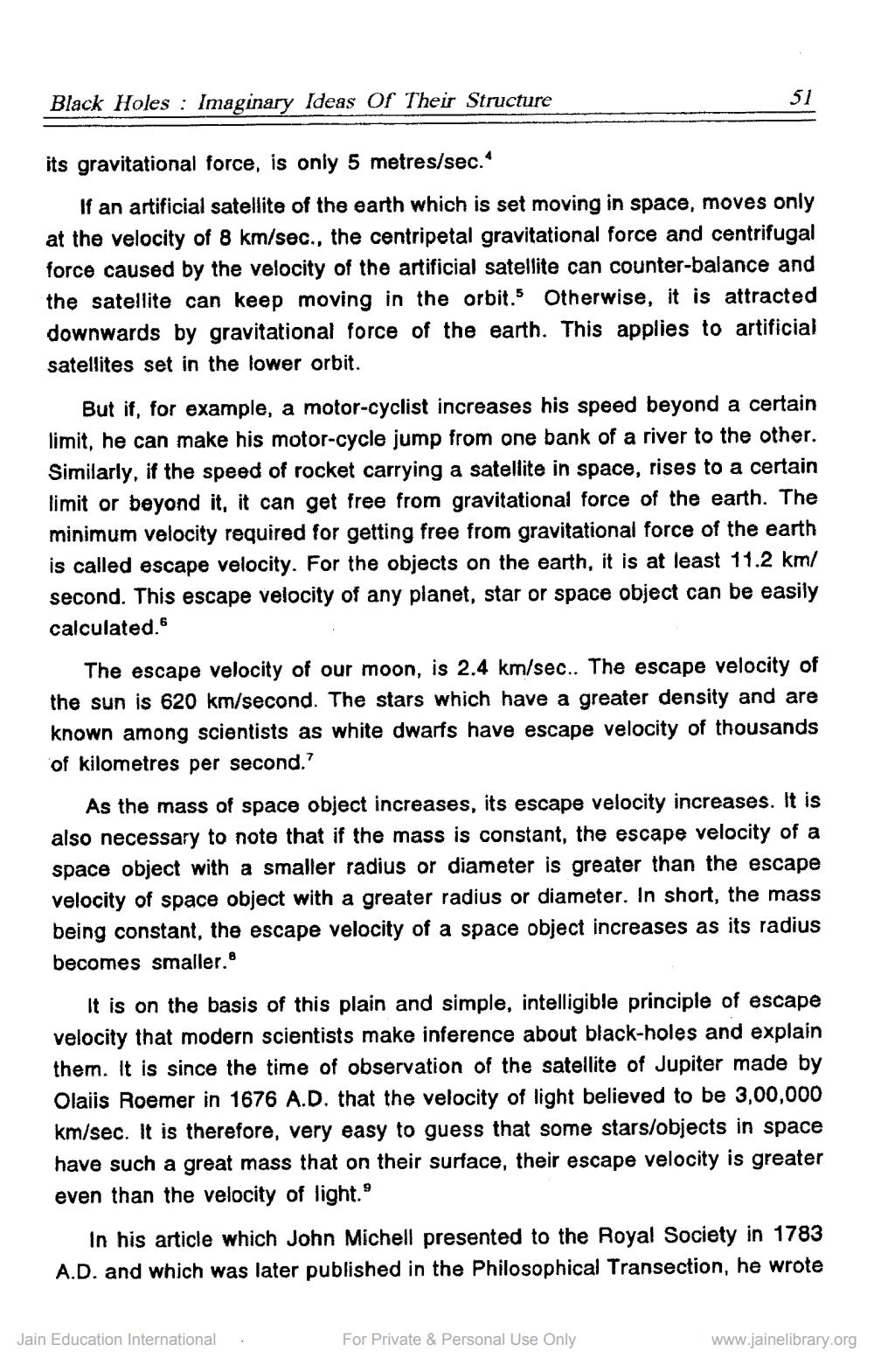________________
Black Holes : Imaginary Ideas Of Their Structure
its gravitational force, is only 5 metres/sec.*
If an artificial satellite of the earth which is set moving in space, moves only at the velocity of 8 km/sec., the centripetal gravitational force and centrifugal force caused by the velocity of the artificial satellite can counter-balance and the satellite can keep moving in the orbit. Otherwise, it is attracted downwards by gravitational force of the earth. This applies to artificial satellites set in the lower orbit.
But if, for example, a motor-cyclist increases his speed beyond a certain limit, he can make his motor-cycle jump from one bank of a river to the other. Similarly, if the speed of rocket carrying a satellite in space, rises to a certain limit or beyond it, it can get free from gravitational force of the earth. The minimum velocity required for getting free from gravitational force of the earth is called escape velocity. For the objects on the earth, it is at least 11.2 km/ second. This escape velocity of any planet, star or space object can be easily calculated.
The escape velocity of our moon, is 2.4 km/sec.. The escape velocity of the sun is 620 km/second. The stars which have a greater density and are known among scientists as white dwarfs have escape velocity of thousands of kilometres per second.'
As the mass of space object increases, its escape velocity increases. It is also necessary to note that if the mass is constant, the escape velocity of a space object with a smaller radius or diameter is greater than the escape velocity of space object with a greater radius or diameter. In short, the mass being constant, the escape velocity of a space object increases as its radius becomes smaller.
It is on the basis of this plain and simple, intelligible principle of escape velocity that modern scientists make inference about black-holes and explain them. It is since the time of observation of the satellite of Jupiter made by Olaiis Roemer in 1676 A.D. that the velocity of light believed to be 3,00,000 km/sec. It is therefore, very easy to guess that some stars/objects in space have such a great mass that on their surface, their escape velocity is greater even than the velocity of light.”
In his article which John Michell presented to the Royal Society in 1783 A.D. and which was later published in the Philosophical Transection, he wrote
Jain Education International
For Private & Personal Use Only
www.jainelibrary.org




